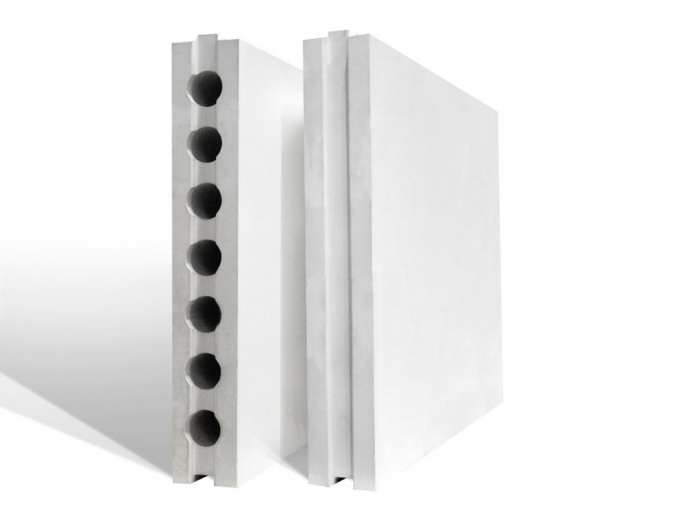Application of the hidrophobic agents GKZH 136-157M & GKE 50-94M
Silicone liquid GKZH 136-157M is a low viscosity methylhydridesiloxane polymer in the form of a colorless or light yellow oil.
Emulsion GKE 50-94M is an aqueous emulsion of silicone fluid - oligomethylhydridesiloxane with additives of emulsifier, biocides, stabilizers.
The hydrophobic agents GKZH 136-157M and GKE 50-94M are used:
· The main application area - as a hydrophobic agent for the production of moisture resistant gypsum boards, interlocking plaster panels and other gypsum products;
· As a hydrophobic and gas-forming additive to concrete;
· To impart hydrophobic properties to surfaces of concrete, brick, plaster, slate, asbestos cement and ceramics;
· As a hydrophobic additive in the repairing of residential, public and industrial buildings and structures;
· For production of moisture-resistant cardboard, paper, fabric, leather;
· For hydrophobization of various bulk materials: titanium dioxide; aerosil, perlite, aluminum hydroxide; fiberglass and other;
· In the production of extinguishing powders based on ammonium phosphates;
· For the antiadhesive greases preparation in the fiberglass products manufacturing.

An additional advantages of these agents are resistance to various factors: ultraviolet and infrared rays, alternating freezing and thawing, moistening and drying. Completely blocking the moisture ingress into the pores of the material, the hydrophobic agents GKZH 136-157M and GKE 50-94M provide natural air exchange, contributes to the reduction of the texture layer pollution and protection from mosses and lichens, acting as an antiseptic. After hydrophobic treatment, the coating retains its thermal insulation properties and appearance. All this in full complex of imparted properties increases the service life of building materials themselves and structures in general.
At various factories for the gypsum materials production, both GKZH 136-157M and its water emulsion GKE 50-94M are applied. Addition of a hydrophobic agent in terms of pure silicone is 0.15-0.2% to a gypsum binder.
According to the standards requirements, water absorption of gypsum boards should be no more than 10% (conventional plates up to 40%), plaster panels - less than 5%.
Emulsion is easier to distribute in aqueous solutions. It is very important in the volumetric hydrophobization of various building materials. with a lower hydrophobic agent consumption, the best hydrophobic effect is achieved. The emulsion’s introduction provides the molding mass spread increasing (reduction in the molding mass density). That is very important for the gypsum boards production technology, and as a result, the gas consumption for gypsum boards drying decreases and at the same time the finished products cost is reduced.
Hydrophobic agents are added to the water of mixing, it imparts the water-repellent properties throughout the material volume during its life.
As the emulsion GKE 50-94M is solvent free, the emulsion does not emit harmful fumes and does not have a harmful effect on the environment, and also it is fireproof.
When using the emulsion, the consumption of silicone is reduced (in the production of plaster panels - about 0.1% to dry gypsum), the water absorption index improves.
The emulsion consumption is much lower in the gypsum boards manufacturing than when using silicone oil.
Especially effective is the emulsion application in the plaster panels production comparing with pure silicone oil. In this case, the yield of waste is significantly reduced and the water escape from the formed products is slowed down until the product is placed in the drying chamber, because the evolving water does not perfuse steel structures, engines of the production line, which otherwise leads to their corrosion.
GKE 50-94M application for volumetric hydrophobization of concrete, paving slabs and other building materials is similar to GKZH-11. At the same time, its application in many cases is more effective and safe. GKZH-11 has a high alkalinity (pH 13-14), therefore it is not suitable for hydrophobic treatment of organic origin materials and not enough effective in treatment of the alkaline nature materials.

